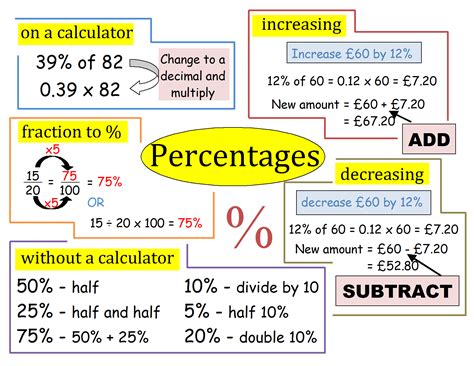What Percentage Is 11 Out Of 20
Kalali
Mar 30, 2025 · 4 min read

Table of Contents
What Percentage is 11 out of 20? A Comprehensive Guide to Percentage Calculations
Calculating percentages is a fundamental skill in numerous aspects of life, from academic studies and professional settings to everyday decision-making. Understanding how to determine percentages allows you to interpret data, make comparisons, and solve various problems efficiently. This comprehensive guide delves into the question, "What percentage is 11 out of 20?", providing a detailed explanation, multiple calculation methods, and practical applications. We’ll also explore related percentage problems and offer tips for mastering this crucial skill.
Understanding Percentages
Before we tackle the specific problem of 11 out of 20, let's solidify our understanding of percentages. A percentage is a fraction or ratio expressed as a number out of 100. The symbol "%" signifies "per hundred." For instance, 50% means 50 out of 100, which is equivalent to ½ or 0.5 as a decimal.
Percentages are used to represent proportions or parts of a whole. They offer a standardized way to compare different quantities, making them invaluable in various fields like finance, statistics, and science.
Calculating "What Percentage is 11 out of 20?"
There are several ways to calculate what percentage 11 out of 20 represents. Let's explore the most common methods:
Method 1: The Fraction Method
This method involves expressing the given numbers as a fraction and then converting the fraction to a percentage.
-
Form a Fraction: Express 11 out of 20 as a fraction: 11/20.
-
Convert to Decimal: Divide the numerator (11) by the denominator (20): 11 ÷ 20 = 0.55
-
Convert to Percentage: Multiply the decimal by 100: 0.55 x 100 = 55%
Therefore, 11 out of 20 is 55%.
Method 2: The Proportion Method
This method uses proportions to solve for the unknown percentage.
-
Set up a Proportion: We can set up a proportion where x represents the unknown percentage:
11/20 = x/100
-
Cross-Multiply: Cross-multiply to solve for x:
20x = 1100
-
Solve for x: Divide both sides by 20:
x = 1100 ÷ 20 = 55
Therefore, x = 55%, confirming that 11 out of 20 is 55%.
Method 3: Using a Calculator
Most calculators have a percentage function. Simply enter 11 ÷ 20 and then multiply the result by 100 to obtain the percentage. Many calculators allow direct percentage calculation; you might have a button that allows you to input "11/20%" directly.
Practical Applications of Percentage Calculations
Understanding percentage calculations is crucial in various real-world scenarios. Here are some examples:
-
Academic Performance: If you scored 11 out of 20 on a test, your score is 55%. This helps you understand your performance relative to the total marks.
-
Financial Calculations: Calculating interest rates, discounts, profit margins, and tax rates all involve percentage calculations. For instance, a 55% discount on a $100 item would save you $55.
-
Data Analysis: Percentages are frequently used to represent proportions within datasets. For example, if a survey shows 11 out of 20 respondents prefer a particular product, the percentage is 55%, illustrating the preference level.
-
Sports Statistics: Baseball batting averages, free throw percentages, and other sports statistics heavily rely on percentage calculations.
-
Cooking and Baking: Recipes often specify ingredients as percentages of the total weight or volume. This is especially important in scaling recipes up or down.
Related Percentage Problems and Solutions
Let's explore some related percentage problems to further solidify your understanding:
Problem 1: What is 25% of 80?
Solution: 25% of 80 is (25/100) * 80 = 20
Problem 2: 15 is what percentage of 60?
Solution: (15/60) * 100 = 25%
Problem 3: If 30% of a number is 18, what is the number?
Solution: Let the number be x. Then 0.3x = 18. Solving for x gives x = 18/0.3 = 60.
Mastering Percentage Calculations: Tips and Tricks
Here are some tips to help you master percentage calculations:
-
Practice Regularly: Consistent practice is key to improving your speed and accuracy. Work through various problems, starting with simple ones and gradually increasing the complexity.
-
Use Different Methods: Familiarize yourself with multiple methods of calculating percentages (fraction, proportion, calculator). This allows you to choose the most efficient method for each problem.
-
Visual Aids: Use visual aids like diagrams or charts to represent the percentages, especially when dealing with complex problems.
-
Understand the Concepts: Don't just memorize formulas; understand the underlying concepts of fractions, ratios, and proportions. This will help you approach problems strategically.
-
Check Your Work: Always verify your answers. Use estimation to check if your calculated percentage is reasonable.
Conclusion
Calculating percentages is a vital skill with broad applications. We've explored various methods to determine that 11 out of 20 is 55%, highlighting the practical importance of understanding percentage calculations. By practicing regularly and understanding the underlying principles, you can confidently tackle percentage problems in various contexts and improve your problem-solving abilities. Remember, mastery of percentages is a cornerstone of numerical literacy, valuable in both personal and professional life. Continue practicing, and you'll quickly become proficient in this essential skill.
Latest Posts
Latest Posts
-
What Is 8 20 As A Percentage
Apr 01, 2025
-
40 Is 80 Percent Of What Number
Apr 01, 2025
-
48 Of 60 Is What Percent
Apr 01, 2025
-
How Many Gallons Is 7 Litres
Apr 01, 2025
-
160 Degrees Celsius Is What In Fahrenheit
Apr 01, 2025
Related Post
Thank you for visiting our website which covers about What Percentage Is 11 Out Of 20 . We hope the information provided has been useful to you. Feel free to contact us if you have any questions or need further assistance. See you next time and don't miss to bookmark.
